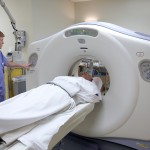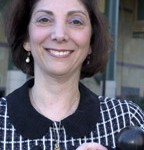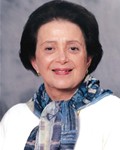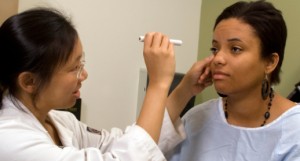Recently, a great deal of media coverage has focused on radiological services such as CT scans, and questions have been raised over the safety related to the increasing use of those services and the amount of radiation they deliver.
Medical imaging procedures, such as CT or CAT scans, are considered by experts to be highly useful for the diagnosis, treatment and monitoring of many medical conditions including cancer, heart disease, trauma, and liver and kidney disease. The recent increase in attention and exposure via the media is valuable, say Emory experts, in highlighting rapidly improving imaging technologies and the importance of ensuring such scans are performed in a setting where there is carefully monitoring to minimize associated radiation exposure.

CT scanner
Emory’s Department of Radiology is well-recognized for its expertise in all subspecialty areas of radiology and medical imaging, as well as its breadth and depth of medical physicists, researchers and educators.
Carolyn Meltzer, MD, William P. Timmie Professor and chair of the Department of Radiology in Emory’s School of Medicine, says, “Emory radiologists are the physician experts in imaging, most receiving more than 13 years of extensive training. In fact, radiologists receive substantive training in radiation biology and safety that is linked to their board certification.”
According to Kimberly Applegate, MD, vice chair of Quality and Safety for Emory’s Department of Radiology, commented on safety recently in the New England Journal of Medicine. She wrote in the article, “The medical community should continue to work together across disciplines to use existing knowledge about radiation protection to ensure that imaging is warranted and optimized.â€
When patients do need imaging, they should ask if the imaging personnel are credentialed and the protocols used are weight-based and indication-based, to ensure quality, notes Applegate. Emory subspecialty radiologists work in multidisciplinary clinical teams to make sure that imaging is used appropriately, she adds.
In order to minimize radiation exposure, Emory Radiology adheres to the following guidelines: CT protocols are optimized by subspecialty-trained radiologists to ensure quality and safe imaging procedures. Further, explains Applegate, low radiation exam protocols are used when appropriate and CTs or X-rays are not performed on pregnant patients unless it is a medical emergency.
Further, in accordance with ACR (American College of Radiology) guidelines, Emory Radiology does not offer whole body screening CT exams. These tests result in unnecessary radiation and often lead to additional unneeded tests, says Applegate.
Click here for more information about radiation safety and what Emory is doing to educate all stakeholders in medical imaging and to ensure safe, high quality imaging. To learn more about medical imaging and expected radiation levels visit RadiologyInfo.
For a summary of the National Council on Radiation Protection and Measurements (NCRP) report on American radiation exposure from all sources, including medical imaging, visit The NCRP report 160: Ionizing Radiation Exposure of the Population of the United States (2009).
 Nadine Kaslow, PhD, Emory School of Medicine professor of psychiatry and behavioral sciences, founded in the early 1990s the Grady Nia Project for abused and suicidal African-American women. Named for the Kwanzaa term that means “purpose,” Nia serves countless numbers of abused women who come through Grady Memorial Hospital’s emergency department each year.
Nadine Kaslow, PhD, Emory School of Medicine professor of psychiatry and behavioral sciences, founded in the early 1990s the Grady Nia Project for abused and suicidal African-American women. Named for the Kwanzaa term that means “purpose,” Nia serves countless numbers of abused women who come through Grady Memorial Hospital’s emergency department each year.













